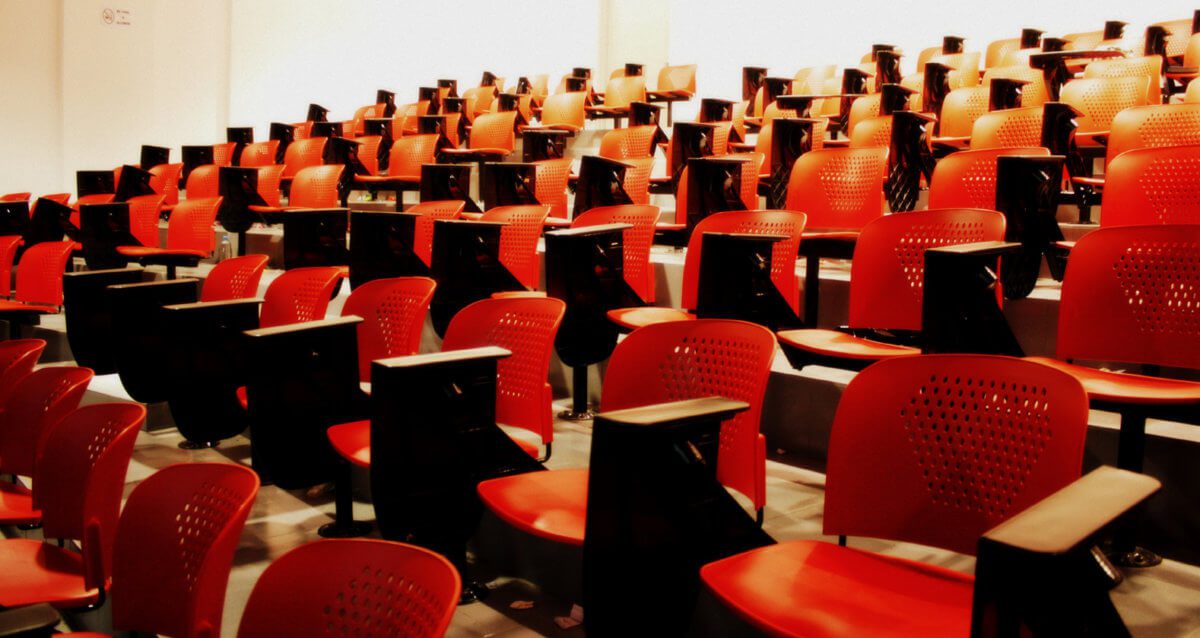Lectures and exams will continue at the ANU, the deputy vice-chancellor, Marnie Hughes-Warrington, confirmed as she provided detail about the types of spaces slated for the new ‘teaching and learning building’.
At the Reunion Court Update Forum on 18 September, Hughes-Warrington confirmed the continued use of lectures and exams, but also signalled that new methods and spaces would be incorporated into the ANU. Yet to be finalised is how exactly teachers will be supported in using the spaces to their full potential.
Following the demolition of the Manning Clark lecture theatres, questions were raised as to whether lectures would be removed from ANU courses.
Hughes-Warrington confirmed that a lecture theatre with retractable tiers would be available to provide a 500 seat theatre. She suggested it would be the ‘replacement’ for Manning Clark.
However the deputy vice-chancellor also indicated that lectures had potentially passed their heyday, as originally implied by the building project.
She said that ‘flipped classrooms’ were being considered as a method of teaching. Flipped classrooms deliver lecture-style content online, and homework-style activities are provided during contact hours.
The movement to alternative learning styles is perhaps given a mandate by the student response to live-streamed lectures. Some courses this semester provided live streaming of lectures to other spaces, where the lecture venue could not hold all students. Staff quickly found that the lecture venues themselves were not full and live streaming was not required.
Other spaces promised at the forum included a top floor which is to be flat, and fit 300 students. The aim is for it to be used as an exam space, indicating that exams are also not to be faded out with the institution of new learning spaces and styles.
‘I’m not a lover of exams,’ Hughes- Warrington admitted, ‘but I’m aware we have a shortage of flat floor space’.
Exams are currently being administered off-campus at Barry Drive and the Croatian Club in O’Connor.
In the teaching and learning building students will also have access to a ground floor commons, flexible space for classes with 30 to 120 people, and a nearby outdoor amphitheatre. A drama theatre, cinema and two bars have also been earmarked for the Culture and Events space.
However there is not yet a detailed plan for engaging with staff to provide support for use of new teaching methods and spaces. When prompted, Hughes-Warrington indicated a two- fold plan.
The first stage was ‘ramping up’ the Education Fellowship Scheme, which provides training and professional recognition to ANU staff. She also indicated that the associate deans were working with Diane Joseph, an education consultant, on a one page teaching resource.
However Hughes-Warrington also indicated that support for staff in the new environment would be ‘the first item of business’ for education committees, following a merge that will reduce the committees from five to two. The committees will be given the mandates of ‘quality’ and ‘innovation’.
The changes might be a Brave New World for the ANU, but Senior Lecturer and Education Designer Tom Worthington suggested the spaces and practices to be implemented are common practice in primary and secondary education.
They have also been implemented for years in other universities, such as the University of Canberra with its Inspire space. He suggested that part of the reason that the ANU lags behind is the prestigious lecturers, who hold more power over the styles of learning they use.
We acknowledge the Ngunnawal and Ngambri people, who are the Traditional Custodians of the land on which Woroni, Woroni Radio and Woroni TV are created, edited, published, printed and distributed. We pay our respects to Elders past and present. We acknowledge that the name Woroni was taken from the Wadi Wadi Nation without permission, and we are striving to do better for future reconciliation.
